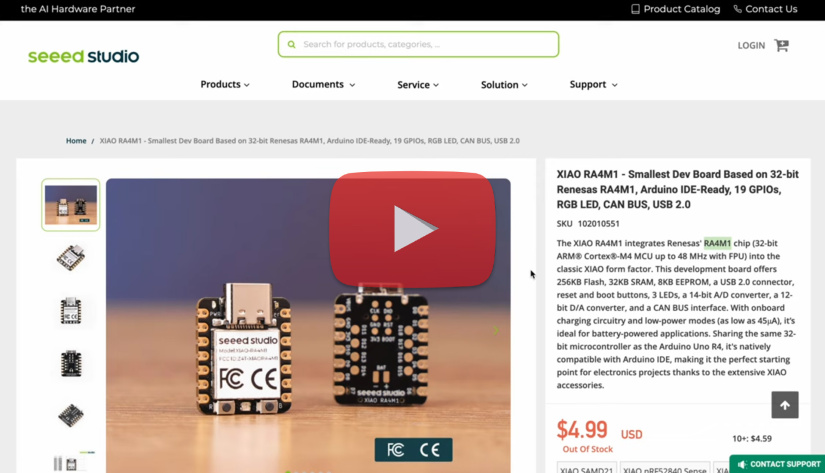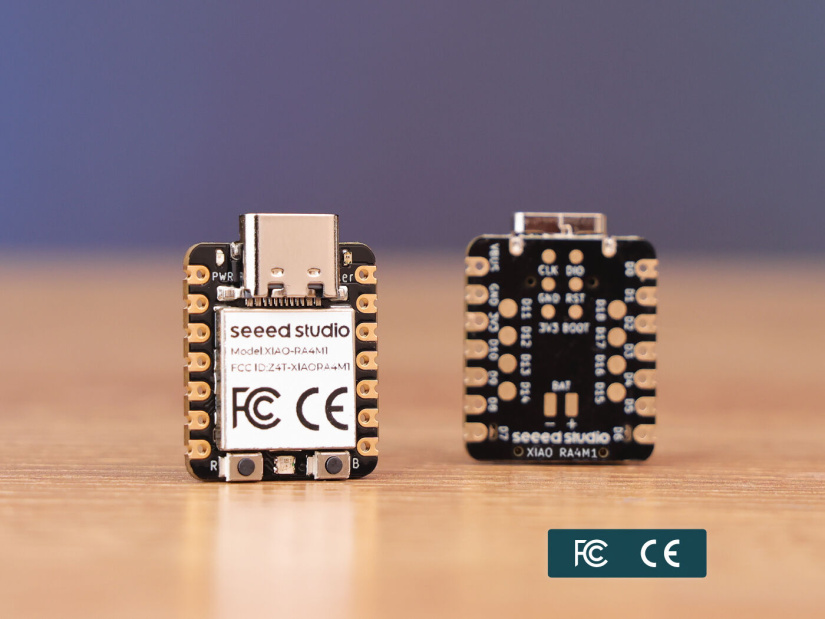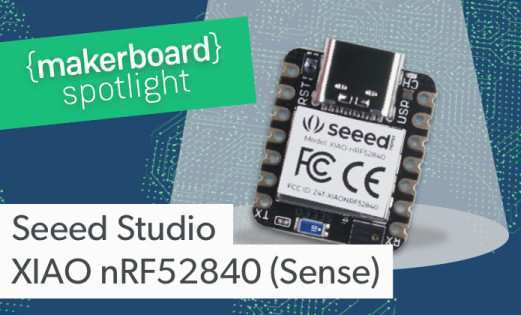Upgrade Your Projects with the Seeed Studio Xiao RA4M1 Microcontroller
The Seeed Studio Xiao RA4M1 is an exciting addition to the ever-evolving Xiao lineup, offering a compact yet powerful solution for a variety of projects. At the heart of this microcontroller is the same RA4M1 chip found in the popular Arduino Uno R4 Wi-Fi and Minima models. This ensures it brings both reliability and performance to makers and developers who are already familiar with these well-known boards.

Watch Ian talk about the New Seeed Xiao RA4M1 board in this episode of The Electromaker Show
One of the key advantages of the Seeed Studio Xiao RA4M1 is its 5V-tolerant pins, a feature that sets it apart from other Xiao boards. This 5V logic compatibility opens the door to more flexible project designs, allowing seamless integration with older sensors and systems that rely on 5V logic levels. Whether you're working on an existing project or developing something new, the Xiao RA4M1 offers the versatility needed to meet a broad range of requirements.
Key Features of the Seeed Studio Xiao RA4M1
The Seeed Studio Xiao RA4M1 brings several notable improvements to the Xiao series, making it a versatile choice for developers and hobbyists alike. Its advanced features enhance both functionality and ease of use, ensuring it can meet a wide range of project requirements.
- 5V Tolerant Pins: One of the most significant upgrades is the addition of 5V logic level support. This enhancement allows the Xiao RA4M1 to easily interface with older sensors and components that rely on 5V, offering backward compatibility with many existing Arduino systems.
- Compact Design: Like other boards in the Xiao lineup, the RA4M1 is designed with a small footprint, making it ideal for projects where space is limited. Despite its size, it packs a powerful 48MHz ARM Cortex-M4 core, complete with an integrated Floating Point Unit (FPU) for handling complex arithmetic and computations more efficiently.
- Extended Connectivity: The Xiao RA4M1 provides additional connectivity options by exposing extra pins on the board. This added flexibility makes it easier to expand your projects and connect to more devices or components. The built-in support for battery management also simplifies the integration of portable power sources, further enhancing its usability in mobile or battery-powered projects.

Benefits of the RA4M1 Chip for Microcontroller Projects
The RA4M1 chip at the core of the Seeed Studio Xiao RA4M1 brings a host of benefits that can enhance various microcontroller projects. It’s designed to meet the needs of both experienced developers and hobbyists, providing a balance of performance, compatibility, and affordability. Let’s explore some of the key advantages it offers:
- Upgrade Path for Arduino Users: The RA4M1 chip presents an excellent upgrade option for those already working with the 5V Arduino Uno R4 series. Thanks to its 5V tolerance, it maintains compatibility with existing peripherals and sensors, allowing users to modernize their projects without the need for major overhauls. If you've been working with older 5V logic systems, transitioning to the RA4M1 is smooth and highly rewarding, offering enhanced processing power and functionality.
- Low-Cost, High-Performance: Despite its advanced features, the RA4M1 chip remains a cost-effective solution for a wide range of projects. Equipped with 32KB of SRAM and 256KB of flash memory, it provides ample storage and computing power for complex applications. This makes it an ideal choice for both hobbyists looking for affordable performance and professionals needing reliable hardware for more demanding tasks. The combination of affordability and capability ensures the RA4M1 is a versatile tool in the microcontroller landscape.
With its high-performance RA4M1 chip, extensive pin connectivity, and battery management capabilities, this board is well-suited for a wide variety of applications, from hobbyist projects to more complex, professional designs. The Seeed Studio Xiao RA4M1 ensures you don’t have to compromise on performance or price, making it a solid choice for anyone looking to explore the possibilities of modern microcontroller projects.
Did you enjoy this article?
Make sure you subscribe to The Electromaker Show for similar content and subscribe to our monthly newsletter!














































Leave your feedback...